Acetylsalicylic Acid Structure and IUPAC Name
Acetylsalicylic acid, commonly known as aspirin, is a synthesized derivative of salicylic acid. It is widely used as a medication to relieve pain, reduce inflammation, and lower fever. Understanding the chemical structure and IUPAC name of acetylsalicylic acid is essential for comprehending its properties and mechanisms of action.
Chemical Structure
Acetylsalicylic acid has a molecular formula of C9H8O4 and a molecular weight of 180.16 g/mol. Its chemical structure consists of a benzene ring with two functional groups attached to it: an acetyl group (-COCH3) and a carboxylic acid group (-COOH). The acetyl group is attached to the benzene ring at the ortho position, while the carboxylic acid group is attached at the meta position.
The acetyl group is introduced through a process called acetylation, which involves the esterification of salicylic acid. During this reaction, the hydroxyl group (-OH) of salicylic acid reacts with acetic anhydride, resulting in the formation of acetylsalicylic acid. This acetylation reaction is catalyzed by an acid catalyst, such as sulfuric acid.
The chemical structure of acetylsalicylic acid is responsible for its pharmacological properties. The acetyl group enhances the lipophilicity of the molecule, allowing it to cross cell membranes more easily. This property contributes to the rapid absorption and distribution of acetylsalicylic acid in the body.
IUPAC Name
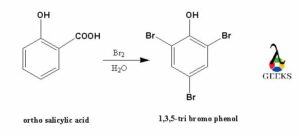
The IUPAC name of acetylsalicylic acid is 2-Acetoxybenzoic acid. This name reflects the presence of the acetyl group (-COCH3) attached to the benzene ring, as well as the carboxylic acid group (-COOH) at the meta position.
The IUPAC nomenclature system is used to provide a standardized way of naming chemical compounds. It ensures clarity and consistency in the identification and communication of chemical structures. By using the IUPAC name, scientists and healthcare professionals can accurately refer to acetylsalicylic acid in their research and clinical practice.
Salicylic Acid Structure and IUPAC Name
Salicylic acid is a natural compound found in the bark of the Willow tree. It is a versatile chemical with various applications in medicine, skincare, and even food preservation. Understanding its chemical structure and IUPAC name can provide valuable insights into its properties and functions.
Chemical Structure
The chemical structure of salicylic acid consists of a benzene ring with a hydroxyl group (-OH) and a carboxyl group (-COOH) attached to it. This structure gives salicylic acid its characteristic properties and allows it to interact with other molecules in a specific way.
The molecular formula of salicylic acid is C₇H₆O₃, and its molecular weight is approximately 138.12 g/mol. The presence of the hydroxyl group makes salicylic acid a weak acid, which means it can donate a proton (H⁺) in a chemical reaction.
Salicylic acid is often referred to as a precursor to acetylsalicylic acid, commonly known as aspirin. This is because acetylsalicylic acid is synthesized from salicylic acid through a process called acetylation. During acetylation, an acetyl group (-COCH₃) is added to the hydroxyl group of salicylic acid, resulting in the formation of acetylsalicylic acid.
IUPAC Name
The IUPAC name of salicylic acid is 2-Hydroxybenzoic acid. This name accurately reflects the structure of the compound, with the hydroxyl group located at the 2-position of the benzene ring and the carboxyl group at the 1-position.
The IUPAC naming system is a standardized way of naming chemical compounds, ensuring clarity and consistency in scientific communication. By using the IUPAC name, researchers and chemists can easily identify and refer to specific compounds, regardless of their common names or synonyms.
Acetylsalicylic Acid Structure Functional Groups
Acetylsalicylic acid, commonly known as aspirin, is a medication that has been widely used for its analgesic, anti-inflammatory, and antipyretic properties. Understanding the structure of acetylsalicylic acid is crucial in comprehending its chemical properties and mode of action.
Acetyl Group: Attached to the hydroxyl group of salicylic acid
One of the key functional groups in acetylsalicylic acid is the acetyl group. This group is attached to the hydroxyl group (-OH) of salicylic acid through a process called acetylation. The acetyl group is composed of two carbon atoms, three hydrogen atoms, and one oxygen atom, forming the chemical formula CH3CO-. This acetylation reaction involves the replacement of the hydroxyl group with the acetyl group, resulting in the formation of acetylsalicylic acid.
The addition of the acetyl group to the salicylic acid molecule alters its chemical properties, leading to the development of aspirin. This modification enhances the stability and solubility of the compound, making it more suitable for medicinal use.
Carboxyl Group: Present in both salicylic acid and acetylsalicylic acid
Another important functional group found in both salicylic acid and acetylsalicylic acid is the carboxyl group. The carboxyl group is composed of one carbon atom, one oxygen atom, and one hydroxyl group (-OH), forming the chemical formula -COOH. This group is responsible for the acidic properties of these compounds.
In salicylic acid, the carboxyl group is directly attached to the benzene ring. However, during the acetylation process, the carboxyl group remains intact in the final structure of acetylsalicylic acid. This group plays a crucial role in the pharmacological activity of aspirin by facilitating its interaction with target molecules in the body.
Understanding the functional groups present in the structure of acetylsalicylic acid provides insights into its chemical properties and mode of action. The acetyl group, attached to the hydroxyl group of salicylic acid, enhances the stability and solubility of the compound. The carboxyl group, present in both salicylic acid and acetylsalicylic acid, contributes to the acidic properties and pharmacological activity of aspirin.
How Does Acetylsalicylic Acid Work?
Acetylsalicylic acid, commonly known as aspirin, is a widely used medication that belongs to the class of nonsteroidal anti-inflammatory drugs (NSAIDs). It is primarily used to relieve pain, reduce inflammation, and lower fever. But have you ever wondered how acetylsalicylic acid actually works in our bodies? In this section, we will explore the mechanism of action of acetylsalicylic acid and its antiplatelet activity.
Mechanism of Action: Inhibition of Prostaglandin Production
One of the key ways in which acetylsalicylic acid works is by inhibiting the production of prostaglandins. Prostaglandins are hormone-like substances that play a crucial role in the body’s inflammatory response and pain signaling. They are produced by an enzyme called cyclooxygenase (COX).
Acetylsalicylic acid acts by irreversibly inhibiting the COX enzyme, specifically COX-1 and COX-2. By doing so, it prevents the conversion of arachidonic acid into prostaglandins. This inhibition of prostaglandin synthesis leads to a reduction in pain, inflammation, and fever.
Antiplatelet Activity: Preventing Blood Clot Formation
In addition to its role as an analgesic and anti-inflammatory agent, acetylsalicylic acid also exhibits antiplatelet activity. Platelets are small cell fragments in the blood that play a crucial role in blood clotting. When blood vessels are damaged, platelets aggregate at the site of injury to form a clot, preventing excessive bleeding.
Acetylsalicylic acid works as an antiplatelet agent by inhibiting the production of thromboxane A2, a substance that promotes platelet aggregation and blood clot formation. By inhibiting thromboxane A2, acetylsalicylic acid helps to prevent the formation of unwanted blood clots, reducing the risk of heart attacks and strokes.
It is important to note that the antiplatelet activity of acetylsalicylic acid is long-lasting due to its irreversible inhibition of COX enzymes. This means that even a single dose of acetylsalicylic acid can have an effect on platelet function for several days.
Salicylic Acid Structure Melting Point
Salicylic acid, a commonly used compound in various industries, possesses a unique structure and characteristic melting point. Understanding the structure and melting point of salicylic acid is essential for its applications in pharmaceuticals, cosmetics, and organic synthesis.
Salicylic acid has a molecular formula of C7H6O3 and a molecular weight of 138.12 g/mol. It is a white crystalline solid that is sparingly soluble in water but dissolves readily in organic solvents such as ethanol and ether. The chemical structure of salicylic acid consists of a benzene ring substituted with a carboxylic acid (-COOH) group and a hydroxyl (-OH) group.
The melting point of salicylic acid is an important physical property that determines its solid-state behavior. The melting point of a substance is the temperature at which it changes from a solid to a liquid state. In the case of salicylic acid, it has a melting point range of approximately 159-161°C.
The melting point of salicylic acid can vary slightly depending on factors such as impurities and the rate of heating. Impurities in the sample can lower the melting point, while a slower heating rate can result in a higher melting point. Therefore, it is crucial to use pure salicylic acid and standardize the heating conditions when determining its melting point.
The melting point range of salicylic acid is relatively high compared to many other organic compounds. This is due to the presence of intermolecular hydrogen bonding between the hydroxyl and carboxylic acid groups. These hydrogen bonds create a network of interactions that stabilize the solid structure of salicylic acid.
The melting point of salicylic acid is often used as a quality control parameter in its production and purification processes. It serves as an indicator of the compound’s purity and can help identify any impurities present. Additionally, the melting point can be used to differentiate salicylic acid from other compounds with similar structures.
Acetylsalicylic Acid Structure Name

Acetylsalicylic acid, commonly known as aspirin, is a widely used medication that belongs to the class of nonsteroidal anti-inflammatory drugs (NSAIDs). It is primarily used to relieve pain, reduce inflammation, and lower fever. The structure of acetylsalicylic acid is composed of two main components: a benzene ring and a carboxylic acid group. Let’s explore the common and chemical names of this compound in more detail.
Common Name: Aspirin

Aspirin is the most well-known and widely used name for acetylsalicylic acid. It is a non-prescription drug that can be easily obtained over the counter. Aspirin is often used to alleviate minor aches and pains, such as headaches, toothaches, and muscle soreness. It is also commonly used as a blood thinner to reduce the risk of heart attacks and strokes.
Chemical Name: 2-Acetoxybenzoic Acid
The chemical name of acetylsalicylic acid is 2-acetoxybenzoic acid. This name provides a more precise description of the compound’s chemical structure. The “2” in the name indicates the position of the acetyl group on the benzene ring. The acetyl group is derived from acetic acid and is attached to the hydroxyl group of salicylic acid through an esterification reaction.
The presence of the acetyl group in acetylsalicylic acid is what distinguishes it from its precursor, salicylic acid. The acetylation of salicylic acid results in the formation of acetylsalicylic acid, which exhibits different properties and therapeutic effects.
To summarize, acetylsalicylic acid, also known as aspirin, has a chemical structure consisting of a benzene ring and a carboxylic acid group. Its common name, aspirin, is widely recognized and used in everyday language, while its chemical name, 2-acetoxybenzoic acid, provides a more detailed description of its structure. Understanding the structure of acetylsalicylic acid is essential for comprehending its properties and mechanisms of action.
Acetylsalicylic Acid Chemistry
Acetylsalicylic acid, commonly known as aspirin, is a widely used medication that belongs to the class of drugs known as nonsteroidal anti-inflammatory drugs (NSAIDs). It is primarily used to relieve pain, reduce inflammation, and lower fever. Understanding the chemistry of acetylsalicylic acid is crucial to comprehend its structure and properties.
Synthesis
The reaction can be represented as follows:
Salicylic acid + Acetic anhydride → Acetylsalicylic acid + Acetic acid
The acetylation reaction results in the formation of acetylsalicylic acid and acetic acid as a byproduct. The presence of the acetyl group in acetylsalicylic acid is responsible for its pharmacological properties.
Chemical Formula
The chemical formula of acetylsalicylic acid is C9H8O4. It consists of nine carbon atoms, eight hydrogen atoms, and four oxygen atoms. The molecular formula represents the actual number of atoms present in a molecule.
Molecular Structure
The molecular structure of acetylsalicylic acid is characterized by a benzene ring fused with a carboxylic acid group (-COOH) and an ester group (-COOCH3). The benzene ring provides stability to the molecule, while the carboxylic acid group and ester group contribute to its acidic and ester-like properties, respectively.
The acetyl group (-COCH3) is attached to the hydroxyl group (-OH) of salicylic acid, resulting in the formation of an ester linkage. This esterification process leads to the synthesis of acetylsalicylic acid.
Properties
Acetylsalicylic acid is a white crystalline powder that is sparingly soluble in water but readily soluble in organic solvents such as ethanol and acetone. It has a melting point of around 135-136°C.
One of the key properties of acetylsalicylic acid is its ability to inhibit the production of prostaglandins, which are responsible for pain, inflammation, and fever. This mechanism of action makes it an effective analgesic, anti-inflammatory, and antipyretic agent.
In addition to its therapeutic properties, acetylsalicylic acid also exhibits antiplatelet activity, which means it helps prevent the formation of blood clots. This property has led to its widespread use as a preventive medication for cardiovascular diseases.
Overall, the chemistry of acetylsalicylic acid plays a crucial role in understanding its structure, synthesis, and properties. This knowledge is essential for the development of new drugs and the optimization of existing medications for various therapeutic purposes.
How Was Acetylsalicylic Acid Discovered?
Acetylsalicylic acid, commonly known as aspirin, was first synthesized by chemist Felix Hoffmann at Bayer in 1897. The discovery of this compound marked a significant milestone in the field of medicine and revolutionized the treatment of pain, inflammation, and fever.
The Journey of Discovery
The story of acetylsalicylic acid begins with a compound called salicylic acid. Salicylic acid is derived from willow bark and has been used for centuries to alleviate pain and reduce fever. However, it had some drawbacks, including its strong acidity, which could irritate the stomach lining.
Felix Hoffmann, a young chemist working at Bayer, set out to find a way to modify salicylic acid to make it more tolerable and effective. His goal was to create a compound that retained the beneficial properties of salicylic acid while minimizing its side effects.
The Synthesis of Acetylsalicylic Acid
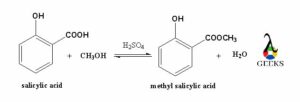
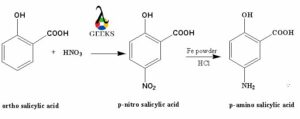
Hoffmann’s breakthrough came through a process known as acetylation. Acetylation involves adding an acetyl group to a molecule, in this case, salicylic acid. By doing so, Hoffmann was able to modify the chemical structure of salicylic acid and create a new compound: acetylsalicylic acid.
The acetylation reaction involved treating salicylic acid with acetic anhydride, a compound that provides the acetyl group necessary for the reaction. This process resulted in the formation of acetylsalicylic acid and acetic acid as a byproduct.
The Significance of Acetylsalicylic Acid
The discovery of acetylsalicylic acid had a profound impact on medicine. Unlike salicylic acid, acetylsalicylic acid was much less acidic, making it gentler on the stomach. This breakthrough allowed for the widespread use of acetylsalicylic acid as a pain reliever, anti-inflammatory agent, and fever reducer.
Furthermore, acetylsalicylic acid exhibited enhanced stability and a longer shelf life compared to salicylic acid. This made it easier to produce and distribute, further contributing to its popularity and widespread use.
The Legacy of Acetylsalicylic Acid
Since its discovery, acetylsalicylic acid has become one of the most widely used drugs in the world. Its effectiveness in relieving pain, reducing inflammation, and preventing blood clotting has made it a staple in medicine cabinets around the globe.
Beyond its medicinal uses, acetylsalicylic acid has also found applications in various industries. It is used in the production of dyes, fragrances, and polymers. Additionally, ongoing research suggests that acetylsalicylic acid may have potential benefits in the prevention and treatment of certain types of cancer.
Structure of Aspirin
Aspirin, also known as acetylsalicylic acid, is a widely used medication that belongs to the class of drugs known as nonsteroidal anti-inflammatory drugs (NSAIDs). It is commonly used to relieve pain, reduce inflammation, and lower fever. Understanding the chemical structure of aspirin is crucial in comprehending its mechanism of action and how it interacts with the body.
Chemical Structure
The chemical structure of aspirin consists of a benzene ring with an acetyl group (-COCH3) and a carboxyl group (-COOH) attached to it. This unique arrangement of atoms gives aspirin its distinct properties and therapeutic effects.
The acetyl group is derived from acetic acid, which is obtained through a process called acetylation. Acetylation involves the reaction of acetic acid with salicylic acid, resulting in the formation of acetylsalicylic acid, or aspirin. This process is essential in the synthesis of aspirin and is responsible for its analgesic and anti-inflammatory properties.
The carboxyl group, on the other hand, is responsible for the acidic nature of aspirin. It is this group that allows aspirin to undergo hydrolysis in the stomach, converting it into salicylic acid. Salicylic acid is the active form of aspirin that exerts its effects on the body.
To better understand the structure of aspirin, let’s take a closer look at its molecular formula and molecular structure.
Molecular Formula and Structure
The molecular formula of aspirin is C9H8O4, indicating that it consists of nine carbon atoms, eight hydrogen atoms, and four oxygen atoms. The molecular structure of aspirin can be represented as follows:

As shown in the image, the benzene ring forms the backbone of the molecule, with the acetyl group (-COCH3) attached to one side and the carboxyl group (-COOH) attached to the other side. This arrangement of atoms gives aspirin its characteristic shape and allows it to interact with specific receptors in the body.
Understanding the structure of aspirin is essential in comprehending its mechanism of action and how it interacts with the body. By targeting specific enzymes involved in the production of inflammatory mediators, aspirin effectively reduces pain and inflammation. Additionally, its ability to inhibit platelet aggregation makes it a valuable medication for preventing cardiovascular events.
Chemical Structure of Acetylsalicylic Acid
Acetylsalicylic acid, commonly known as aspirin, is a widely used medication that belongs to the class of drugs known as nonsteroidal anti-inflammatory drugs (NSAIDs). It is primarily used to relieve pain, reduce inflammation, and lower fever. Understanding the chemical structure of acetylsalicylic acid is crucial in comprehending its properties and mechanisms of action.
Molecular Formula: C9H8O4
The molecular formula of acetylsalicylic acid is C9H8O4, which represents the number and types of atoms present in a molecule. In this case, there are nine carbon atoms (C), eight hydrogen atoms (H), and four oxygen atoms (O). The molecular formula provides a basic understanding of the composition of acetylsalicylic acid, but it does not reveal the arrangement of atoms within the molecule.
To gain a deeper insight into the structure of acetylsalicylic acid, we need to examine its molecular structure.
Molecular Structure
The molecular structure of acetylsalicylic acid consists of a benzene ring attached to a carboxylic acid group (COOH) and an ester group (COOCH3). The benzene ring is a six-membered ring composed of alternating carbon and hydrogen atoms. The carboxylic acid group is represented by the COOH moiety, which consists of a carbon atom double-bonded to an oxygen atom and single-bonded to a hydroxyl group (OH). The ester group, represented by COOCH3, is formed through the reaction of an alcohol group (-OH) with an acid group (-COOH), resulting in the formation of an ester bond (-COO-).
The presence of the acetyl group (CH3CO-) in acetylsalicylic acid is responsible for its name. The acetyl group is formed through a process called acetylation, which involves the addition of an acetyl group to a compound. In the case of acetylsalicylic acid, acetylation occurs through the esterification of salicylic acid with acetic anhydride.
Acetylsalicylic Acid Synthesis
The synthesis of acetylsalicylic acid involves the reaction between salicylic acid and acetic anhydride in the presence of a catalyst, such as sulfuric acid. During the reaction, the hydroxyl group (-OH) of salicylic acid reacts with the acetic anhydride, resulting in the formation of acetylsalicylic acid and acetic acid. The reaction can be represented as follows:
Salicylic acid + Acetic anhydride → Acetylsalicylic acid + Acetic acid
The synthesis of acetylsalicylic acid is an important process in the pharmaceutical industry, as it allows for the production of aspirin on a large scale.
Properties of Acetylsalicylic Acid
Acetylsalicylic acid exhibits several properties that contribute to its therapeutic effects. It is a white, crystalline powder that is sparingly soluble in water but soluble in organic solvents. It has a melting point of around 135 degrees Celsius.
One of the key properties of acetylsalicylic acid is its ability to inhibit the production of prostaglandins, which are responsible for mediating pain, inflammation, and fever. By inhibiting the enzyme cyclooxygenase (COX), acetylsalicylic acid reduces the synthesis of prostaglandins, thereby alleviating pain and inflammation.
Furthermore, acetylsalicylic acid has anticoagulant properties, meaning it can prevent the formation of blood clots. This property is particularly useful in reducing the risk of heart attacks and strokes.
Salicylic Acid Structure Name
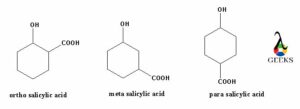
Salicylic acid, also known as 2-hydroxybenzoic acid, is a common organic compound with a chemical formula C7H6O3. It is widely used in various industries, including pharmaceuticals, cosmetics, and agriculture, due to its diverse properties and applications.
Common Name: Salicylic acid
Salicylic acid is the common name for 2-hydroxybenzoic acid. It is derived from the Latin word “salix,” which means willow tree. The compound was first isolated from the bark of willow trees, which have been used for centuries to alleviate pain and reduce fever.
Salicylic acid is a white crystalline solid that is slightly soluble in water. It has a characteristic odor and a bitter taste. It is commonly used in skincare products, such as acne treatments and exfoliants, due to its ability to unclog pores and remove dead skin cells.
Chemical Name: 2-Hydroxybenzoic acid
The chemical name of salicylic acid is 2-hydroxybenzoic acid. This name reflects the compound’s molecular structure, which consists of a benzene ring with a hydroxyl group (-OH) and a carboxylic acid group (-COOH) attached to it.
The hydroxyl group is responsible for the compound’s acidity and its ability to act as a weak acid. The carboxylic acid group contributes to the compound’s solubility in organic solvents and its reactivity in various chemical reactions.
Salicylic acid is an important precursor for the synthesis of many pharmaceutical drugs, including acetylsalicylic acid, commonly known as aspirin. It is also used as a starting material for the production of other salicylates, such as methyl salicylate and ethyl salicylate, which are used in topical analgesics and fragrances.
Salicylic Acid Structure Class 12
Salicylic acid structure is often studied in chemistry classes at the 12th-grade level.
Salicylic acid, also known as 2-hydroxybenzoic acid, is a common organic compound that belongs to the class of aromatic compounds. It is derived from the metabolism of salicin, a natural compound found in plants such as willow bark and wintergreen leaves. Salicylic acid has a molecular formula of C7H6O3 and a molecular weight of 138.12 g/mol.
The structure of salicylic acid consists of a benzene ring with a hydroxyl group (-OH) attached to it at the ortho position (position 2). This hydroxyl group is responsible for the acid properties of salicylic acid. The carboxyl group (-COOH) is attached to the benzene ring at the para position (position 4). The presence of both the hydroxyl and carboxyl groups makes salicylic acid a carboxylic acid.
Here is a table summarizing the structural properties of salicylic acid:
| Property | Description |
|---|---|
| Chemical Formula | C7H6O3 |
| Molecular Weight | 138.12 g/mol |
| Molecular Structure |  |
| Functional Groups | Hydroxyl group (-OH) and Carboxyl group (-COOH) |
| Aromaticity | Benzene ring |
Salicylic acid is a precursor to many important compounds, including acetylsalicylic acid, commonly known as aspirin. The synthesis of acetylsalicylic acid involves the acetylation of the hydroxyl group of salicylic acid, where an acetyl group (-COCH3) is added. This reaction is typically carried out through esterification, resulting in the formation of acetylsalicylic acid and water.
Salicylic Acid Structure and Uses
Salicylic acid is a versatile compound that is widely used in the field of medicine and skincare. Its chemical structure plays a crucial role in its effectiveness and applications. Let’s explore the structure of salicylic acid and its various uses.
Structure of Salicylic Acid
Salicylic acid, also known as 2-hydroxybenzoic acid, has a simple yet important molecular structure. It consists of a benzene ring with a hydroxyl group (-OH) attached to it at the ortho position. This hydroxyl group is responsible for the acid properties of salicylic acid. The chemical formula of salicylic acid is C7H6O3.
The molecular structure of salicylic acid is characterized by its aromatic ring and the hydroxyl group, which gives it both acidic and phenolic properties. This unique structure allows salicylic acid to exhibit various beneficial effects on the skin and body.
Uses of Salicylic Acid
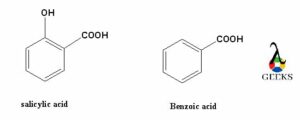
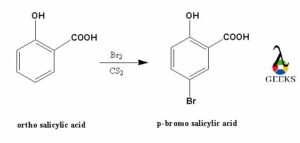
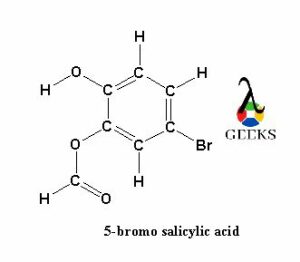

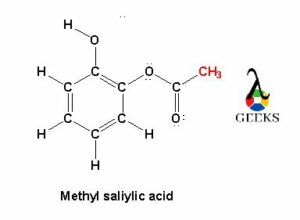
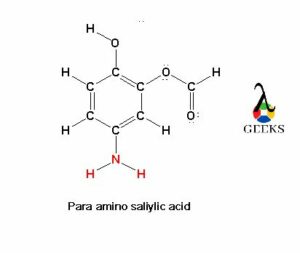

Salicylic acid is used in the treatment of various skin conditions, such as acne, psoriasis, and warts. Its keratolytic properties make it effective in exfoliating the skin and unclogging pores, which helps in treating acne. Salicylic acid also has anti-inflammatory properties that can reduce redness and swelling associated with skin conditions.
In addition to its skincare applications, salicylic acid is also used in the production of aspirin. Aspirin, also known as acetylsalicylic acid, is derived from salicylic acid through a process called acetylation. The acetyl group is added to the hydroxyl group of salicylic acid, resulting in the formation of aspirin.
Apart from its role in skincare and pharmaceuticals, salicylic acid is also used as a food preservative, flavoring agent, and in the production of dyes and fragrances. Its versatility and effectiveness make it a valuable compound in various industries.
Salicylic Acid Structure and Hydrogen Bonding
Salicylic acid is a compound that is widely known for its medicinal properties. It is a key ingredient in many over-the-counter skincare products and is also the precursor to acetylsalicylic acid, commonly known as aspirin. One important aspect of salicylic acid’s structure is its ability to form hydrogen bonds, which play a crucial role in its chemical properties and interactions.
Hydrogen Bonding in Salicylic Acid
Salicylic acid contains two functional groups that are capable of forming hydrogen bonds: the hydroxyl group (-OH) and the carboxyl group (-COOH). These groups contain highly electronegative oxygen atoms, which can attract hydrogen atoms from other molecules.
The hydroxyl group in salicylic acid consists of an oxygen atom bonded to a hydrogen atom. This oxygen atom has a partial negative charge due to its high electronegativity, while the hydrogen atom has a partial positive charge. This creates a dipole moment within the hydroxyl group, making it capable of forming hydrogen bonds with other molecules or functional groups.
Similarly, the carboxyl group in salicylic acid also contains an oxygen atom with a partial negative charge and a hydrogen atom with a partial positive charge. This allows the carboxyl group to engage in hydrogen bonding with other molecules or functional groups.
Importance of Hydrogen Bonding
Hydrogen bonding is a type of intermolecular force that plays a crucial role in the physical and chemical properties of many compounds, including salicylic acid. The presence of hydrogen bonding in salicylic acid contributes to its solubility in water and its ability to form complexes with other molecules.
When salicylic acid is dissolved in water, the hydroxyl and carboxyl groups can form hydrogen bonds with water molecules. This interaction allows salicylic acid to dissolve readily in water, making it easier for the compound to be absorbed by the body when ingested or applied topically.
Hydrogen bonding also influences the stability and structure of salicylic acid. The formation of hydrogen bonds between different salicylic acid molecules can lead to the formation of dimers or larger aggregates. These interactions contribute to the overall structure and physical properties of the compound.
Salicylic Acid Structure Functional Groups
Salicylic acid is a compound that plays a crucial role in the synthesis of acetylsalicylic acid, commonly known as aspirin. Understanding the functional groups present in salicylic acid is essential to comprehend its chemical properties and reactivity.
Salicylic acid contains two main functional groups: a hydroxyl group (-OH) and a carboxyl group (-COOH). These functional groups are responsible for the compound’s acidity and its ability to undergo various chemical reactions.
The hydroxyl group (-OH) is a characteristic feature of alcohols. In salicylic acid, this group is attached to a benzene ring, which gives the compound its aromatic nature. The presence of the hydroxyl group makes salicylic acid a weak acid, allowing it to donate a proton (H+) in solution.
The carboxyl group (-COOH) is a combination of a carbonyl group (-C=O) and a hydroxyl group (-OH). It is a characteristic feature of carboxylic acids. The carboxyl group in salicylic acid contributes to its acidity, making it more acidic than the hydroxyl group alone. This acidity is due to the ability of the carboxyl group to release a proton (H+) in solution.
The combination of these two functional groups in salicylic acid gives it unique chemical properties and reactivity. The hydroxyl group allows for hydrogen bonding and solubility in polar solvents, while the carboxyl group enhances its acidity and reactivity towards nucleophiles.
What Parts of Acetylsalicylic Acid Are Rigid
Acetylsalicylic acid, commonly known as aspirin, is a widely used medication with various therapeutic properties. Understanding its structure is crucial in comprehending its function and effects. In this section, we will explore the rigid parts of acetylsalicylic acid, namely the benzene ring and the acetyl group.
The Benzene Ring: A Rigid Structure
The benzene ring is a fundamental component of acetylsalicylic acid’s structure. It consists of six carbon atoms arranged in a hexagonal shape, with alternating single and double bonds. This unique arrangement gives the benzene ring its exceptional stability and rigidity.
The rigid nature of the benzene ring is due to the delocalization of electrons within the ring structure. This delocalization creates a resonance effect, where the electrons are shared among all the carbon atoms in the ring. As a result, the benzene ring remains stable and resistant to deformation.
The rigidity of the benzene ring is essential for the overall stability of acetylsalicylic acid. It ensures that the molecule maintains its structure and properties, allowing it to interact effectively with its target receptors in the body.
The Acetyl Group: Another Rigid Component
Another rigid part of acetylsalicylic acid is the acetyl group. The acetyl group consists of two carbon atoms bonded to each other, with one of the carbon atoms also bonded to three hydrogen atoms. This group is attached to the benzene ring through an ester linkage.
The acetyl group plays a crucial role in the pharmacological activity of acetylsalicylic acid. It is responsible for the acetylation reaction, where the acetyl group is transferred to specific proteins in the body. This acetylation process influences various cellular processes, including inflammation and pain perception.
Similar to the benzene ring, the acetyl group is relatively rigid due to the presence of multiple bonds. The double bond between the two carbon atoms and the polar nature of the ester linkage contribute to the stability of the acetyl group. This rigidity ensures that the acetyl group remains intact during interactions with target proteins, allowing for precise and controlled acetylation reactions.
What Does Acetylsalicylic Acid Look Like
Acetylsalicylic acid, commonly known as aspirin, is a white crystalline powder. Its physical appearance is that of fine, needle-like crystals. When observed under a microscope, these crystals appear as elongated structures with sharp edges.
The white color of acetylsalicylic acid is a result of its molecular structure. The compound is composed of carbon, hydrogen, and oxygen atoms arranged in a specific pattern. This arrangement gives rise to the characteristic white color of the powder.
The crystalline nature of acetylsalicylic acid is due to the way its molecules pack together. The molecules align themselves in an organized manner, forming a repeating pattern that extends throughout the crystal lattice. This arrangement contributes to the stability and solid nature of the compound.
It is important to note that acetylsalicylic acid is highly soluble in organic solvents, such as ethanol and acetone, but has limited solubility in water. This property further influences its physical appearance, as the compound tends to dissolve in certain liquids rather than remaining in its solid form.
Why Is Acetylsalicylic Acid in Aspirin
Acetylsalicylic acid, commonly known as aspirin, is a widely used medication that has been trusted for decades to relieve pain, reduce inflammation, and lower fever. But have you ever wondered why acetylsalicylic acid is the key ingredient in aspirin? In this section, we will explore the therapeutic effects of acetylsalicylic acid that make it an essential component of this popular medication.
Therapeutic Effects: Acetylsalicylic acid’s anti-inflammatory and analgesic properties make it a key ingredient in aspirin.
Acetylsalicylic acid is a derivative of salicylic acid, a compound found naturally in plants such as willow bark. It belongs to a class of drugs known as nonsteroidal anti-inflammatory drugs (NSAIDs). Aspirin, with acetylsalicylic acid as its active ingredient, is widely used for its therapeutic effects, primarily due to its anti-inflammatory and analgesic properties.
Anti-inflammatory Effects
Inflammation is a natural response of the body to injury or infection. While it is an essential part of the healing process, excessive inflammation can lead to pain and discomfort. Acetylsalicylic acid works by inhibiting the production of certain enzymes called cyclooxygenases (COX). These enzymes play a crucial role in the production of prostaglandins, which are responsible for inflammation. By blocking the COX enzymes, acetylsalicylic acid helps reduce inflammation, providing relief from conditions such as arthritis, muscle sprains, and joint pain.
Analgesic Effects
Pain is a common symptom experienced by individuals due to various reasons, ranging from headaches to chronic conditions. Acetylsalicylic acid acts as an analgesic, which means it helps alleviate pain. It does so by interfering with the transmission of pain signals in the body. By inhibiting the production of prostaglandins, acetylsalicylic acid reduces the sensitivity of pain receptors, resulting in pain relief.
Other Therapeutic Effects
Apart from its anti-inflammatory and analgesic effects, acetylsalicylic acid also possesses additional therapeutic properties. It acts as an antipyretic, which means it helps lower fever by reducing the production of prostaglandins in the brain. Additionally, acetylsalicylic acid has antiplatelet properties, meaning it inhibits the aggregation of platelets in the blood, which can help prevent blood clots and reduce the risk of heart attacks and strokes.
Acetylsalicylic Acid Crystal Structure
Acetylsalicylic acid, commonly known as aspirin, is a widely used medication known for its analgesic (pain-relieving), antipyretic (fever-reducing), and anti-inflammatory properties. But have you ever wondered what the crystal structure of acetylsalicylic acid looks like? In this section, we will explore the unique arrangement of molecules that form the crystal structure of acetylsalicylic acid.
Acetylsalicylic acid forms crystals with a specific arrangement of molecules. These crystals belong to the monoclinic crystal system, which is characterized by three unequal axes and one angle that is not a right angle. The crystal structure of acetylsalicylic acid is made up of individual molecules held together by intermolecular forces such as hydrogen bonding.
The acetylsalicylic acid molecule consists of a benzene ring attached to a carboxylic acid group and an acetyl group. The carboxylic acid group (-COOH) is responsible for the acidic properties of acetylsalicylic acid, while the acetyl group (-COCH3) is derived from the process of acetylation, where an acetyl group is added to a compound through esterification.
In the crystal structure of acetylsalicylic acid, the molecules are arranged in layers. Within each layer, the molecules are held together by intermolecular hydrogen bonds between the carboxylic acid groups of adjacent molecules. These hydrogen bonds play a crucial role in stabilizing the crystal structure and determining the physical properties of acetylsalicylic acid.
The layers of acetylsalicylic acid molecules are further stabilized by van der Waals forces, which are weak attractive forces between molecules. These forces help maintain the overall structure of the crystal and contribute to the solid-state properties of acetylsalicylic acid, such as its melting point and solubility.
It is worth noting that the crystal structure of acetylsalicylic acid can vary depending on factors such as temperature and pressure. Changes in these conditions can lead to different crystal forms, each with its own unique arrangement of molecules.
Acetylsalicylic Acid Structure Formula
Acetylsalicylic acid, commonly known as aspirin, is a widely used medication that belongs to the class of drugs known as nonsteroidal anti-inflammatory drugs (NSAIDs). It is primarily used to relieve pain, reduce inflammation, and lower fever. But have you ever wondered what the chemical structure of acetylsalicylic acid looks like? In this section, we will explore the molecular formula and structure of acetylsalicylic acid.
Chemical Formula: C9H8O4
The chemical formula of acetylsalicylic acid is C9H8O4. This formula provides us with valuable information about the composition of the molecule. Let’s break it down:
-
C9: This indicates that acetylsalicylic acid contains 9 carbon atoms. Carbon is an essential element in organic compounds and forms the backbone of many molecules.
-
H8: This tells us that there are 8 hydrogen atoms in acetylsalicylic acid. Hydrogen is the most abundant element in the universe and plays a crucial role in chemical reactions.
-
O4: This signifies that acetylsalicylic acid consists of 4 oxygen atoms. Oxygen is a highly reactive element and is involved in various biological processes.
By analyzing the chemical formula, we can deduce that acetylsalicylic acid is composed of carbon, hydrogen, and oxygen atoms. However, the formula alone does not provide a complete picture of the molecule’s structure.
Molecular Structure
To understand the molecular structure of acetylsalicylic acid, we need to delve deeper into its chemical composition. Acetylsalicylic acid is derived from salicylic acid through a process called acetylation. During acetylation, an acetyl group (CH3CO-) is added to the hydroxyl group (-OH) of salicylic acid, resulting in the formation of acetylsalicylic acid.
The addition of the acetyl group modifies the properties of salicylic acid, making it more stable and less irritating to the stomach. This modification allows acetylsalicylic acid to be used as a medication without causing significant gastrointestinal side effects.
The molecular structure of acetylsalicylic acid can be represented as follows:
CH3COOH
|
HO-C6H4-CO2H
|
OH
In this structure, the acetyl group (CH3CO-) is attached to the hydroxyl group (-OH) of salicylic acid. The presence of the acetyl group alters the chemical properties of the molecule, giving rise to the unique characteristics of acetylsalicylic acid.
The chemical formula and molecular structure of acetylsalicylic acid provide insights into its composition and properties. Understanding the structure of this widely used medication can help us comprehend how it interacts with our bodies and exerts its therapeutic effects. In the next section, we will explore the synthesis and properties of acetylsalicylic acid in more detail. Stay tuned!
Acetylsalicylic Acid Structural Formula
The structural formula of acetylsalicylic acid shows the arrangement of atoms and bonds in the molecule.
Acetylsalicylic acid, also known as aspirin, is a widely used medication that belongs to the class of nonsteroidal anti-inflammatory drugs (NSAIDs). Its chemical formula is C9H8O4, and its molecular structure consists of a benzene ring attached to a carboxylic acid group (COOH) and an ester group (COOC2H3). The acetyl group (CH3CO) is attached to the hydroxyl group (OH) of the salicylic acid molecule through a process called acetylation.
The acetylation reaction involves the esterification of the hydroxyl group of salicylic acid with acetic anhydride, resulting in the formation of acetylsalicylic acid. This process is commonly used in the synthesis of aspirin. The acetyl group adds a functional group to the salicylic acid molecule, which enhances its pharmacological properties.
The structural formula of acetylsalicylic acid can be represented as:
H
|
H - C - O - C - CH3
|
C
|
H - C - O - OH
|
C
|
H
In this formula, the benzene ring is represented by a hexagon, and the bonds between the atoms are shown by lines. The carbon atoms are represented by the letter C, the hydrogen atoms by H, and the oxygen atoms by O. The acetyl group is represented by CH3CO, and the carboxylic acid group is represented by COOH.
The structural formula of acetylsalicylic acid provides valuable information about the arrangement of atoms and bonds in the molecule. It helps in understanding the chemical properties and interactions of the compound, which are crucial for its pharmacological effects.
Frequently Asked Questions
1. What is the structure and IUPAC name of acetylsalicylic acid?
The structure of acetylsalicylic acid, also known as aspirin, is represented as follows:

Its IUPAC name is 2-acetoxybenzoic acid.
2. What is the structure and IUPAC name of salicylic acid?
The structure of salicylic acid is represented as follows:

Its IUPAC name is 2-hydroxybenzoic acid.
3. What are the functional groups present in the structure of acetylsalicylic acid?
The functional groups present in the structure of acetylsalicylic acid are the carboxylic acid group (-COOH) and the acetyl group (-COCH3).
4. How does acetylsalicylic acid work?
Acetylsalicylic acid works by inhibiting the production of prostaglandins, which are responsible for pain, inflammation, and fever. It achieves this by irreversibly inhibiting the enzyme cyclooxygenase (COX), thereby reducing the production of prostaglandins.
5. What is the melting point of salicylic acid?
The melting point of salicylic acid is approximately 159 °C.
6. What is the name of the structure of acetylsalicylic acid?
The structure of acetylsalicylic acid is commonly referred to as the aspirin structure.
7. What is the chemistry of acetylsalicylic acid?
The chemistry of acetylsalicylic acid involves its synthesis through acetylation, where the acetyl group is added to salicylic acid. This process is known as esterification. Acetylsalicylic acid can undergo hydrolysis to form salicylic acid and acetic acid.
8. How was acetylsalicylic acid discovered?
Acetylsalicylic acid was first synthesized by a chemist named Felix Hoffmann in 1897 while working for the pharmaceutical company Bayer. It was developed as a derivative of salicylic acid to reduce its side effects.
9. What is the structure for aspirin?
The structure for aspirin is the same as the structure for acetylsalicylic acid, which is represented as follows:

10. What are the uses of salicylic acid?
Salicylic acid is commonly used in skincare products for its exfoliating and anti-inflammatory properties. It is also used in the treatment of acne, psoriasis, and other skin conditions. Additionally, salicylic acid is used in the production of dyes, fragrances, and rubber.

Hello everyone, I am Dr. Shruti M Ramteke, I did my Ph.D. in chemistry. I am passionate about writing and like to share my knowledge with others . Feel free to contact me on linkedin